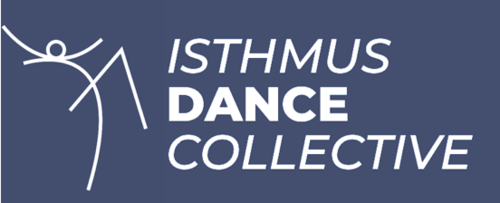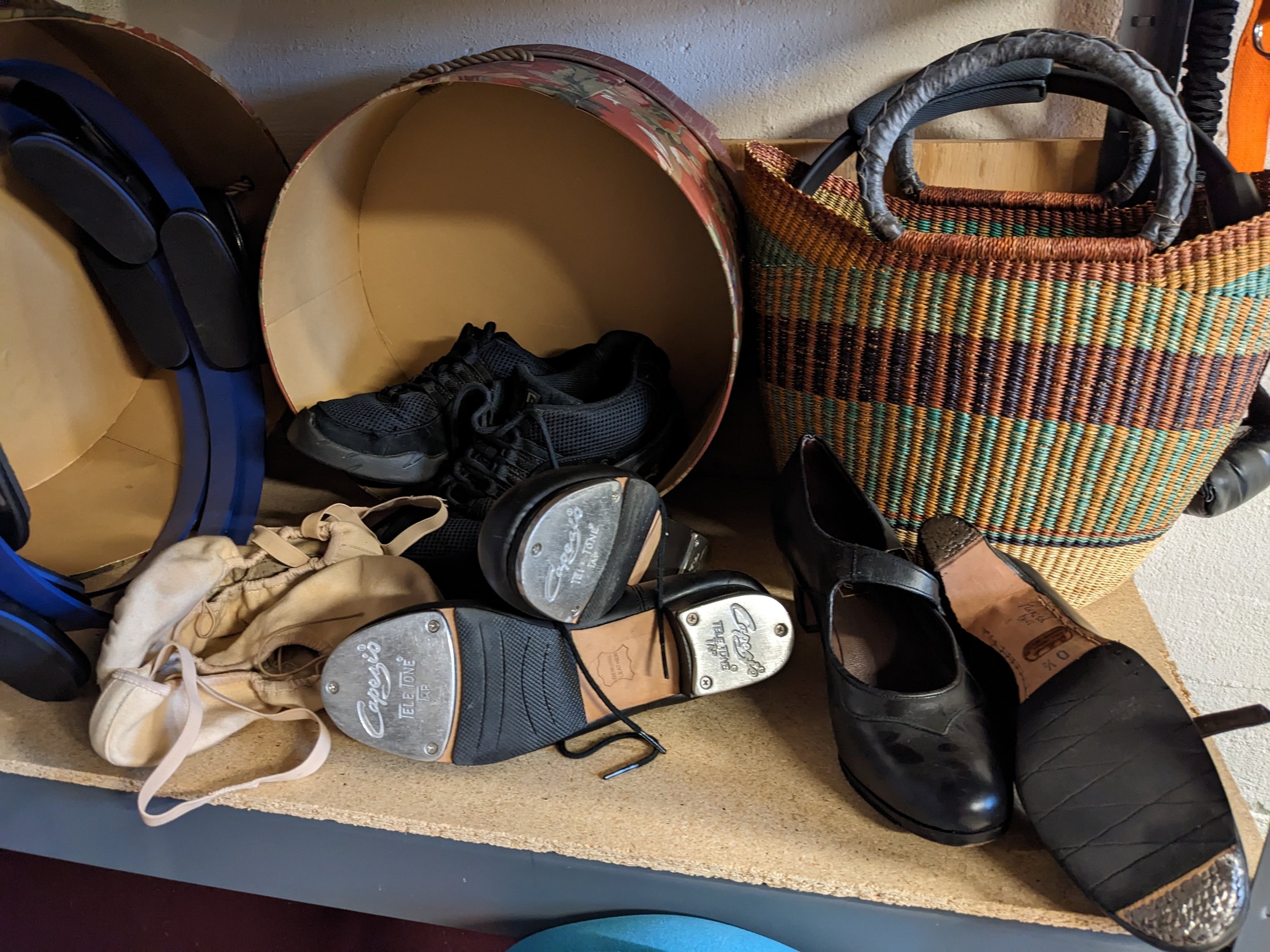Creating a Dance Space at Home
For many dance forms, successful practice is deliberate, focused, and frequent, so creating a home dance studio that allows for quick, easy, distraction free use is key.
Let's build from the ground up. Depending on your dance form, you'll have different floor needs. For example for tap, flamenco, or other percussive dance forms if you don't have a hardwood floor that you're ok getting marked up, you'll need an appropriate practice floor.
Whatever your floor surface, keep the majority of it clear, clean, and ready to dance.
You'll probably need additional items for your practice, whether it's therapy bands for conditioning, specialty shoes for your form, a music player, space for a screen for instructional videos or zoom classes, finger cymbals, dance belts, scarves, fans, or ankle bells, etc.
I like to use shelf with baskets on it for storing items off the floor, but with easy access. Besides, many baskets are quite beautiful, come in a range of useful sizes, and help add to a welcoming and inviting space.
A tall shelf allows for a video screen to be placed more at eye level and shoes and other floor specific items to be down low where they'll be needed. Using a shelf also makes more wall space available for mirrors if you have them.
Speaking of mirrors, they can be a very helpful tool, but can also quickly form poor habits, so setting up your space so that you can face away from the mirrors or cover them with curtains once in a while can help you keep your practice more fully embodied and avoid mirror fixation.
Raka, an IDC member and master teacher in the classical Indian form of Odissi dance has a lovely home studio that she’s been teaching privates and zoom lessons out of during the pandemic and moving forward. Here’s what she has to say about her space:
“My space is a converted primary bedroom. It is ideal for 1-3 students, teaching online, and for my personal practice. It is close to the entryway and the guest bathroom, which makes it convenient to students while keeping my personal living space separate. The walk-in closets are ideal changing rooms and for costume and prop storage.
”There is an altar in the room as I practice meditation and ritual in this space, a focal point mural, several Indian art pieces, a static rigging point for a trapeze bar, and a couple sturdy comfortable chairs available for students, parents, or guests. My space also doubles as an Ayurvedic treatment studio and includes a massage table, which I often use when discussing visual content or to lay out and iron performance costumes.
“The space includes one full wall of mirrors, multiple lighting options, and a music system. I utilize small tables of various heights to record movement with my laptop from different directions in the room. Distance and angle of camera should be checked to ensure your visual capture shows the full or partial body details as you desire. The mirror, if utilized in video recording, adds space and dimension. A wall mounted display is utilized for video review and projection.”
There is no one right way to create a home studio - the most important features are that it is a welcoming space that you want to spend time in, but that it also allows for distraction-free focus. Use your creativity! Play around with how things are arranged and stored until you find what works.
Looking for more ideas? Check out some suggestions from other dance experts in this article from Porch.com
Happy practicing!




